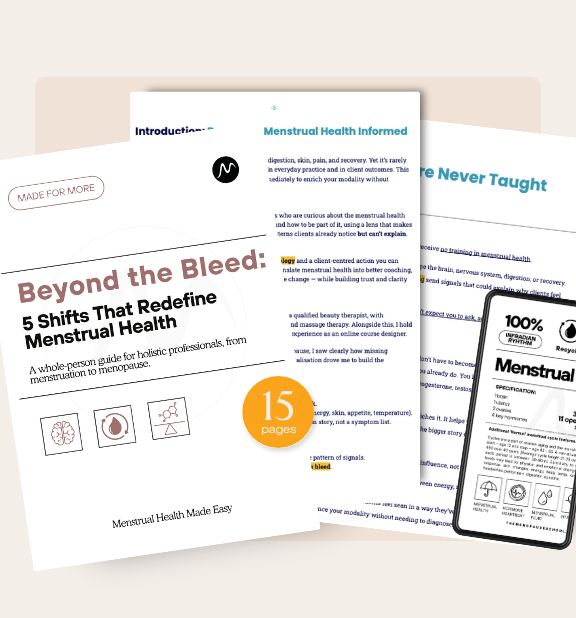The Rhythm Within
Menstrual cycles are repeating patterns of whole-body shifts — signals we can learn to connect with.

A Misnamed Health Marker
The word “period” comes from the Latin periodus — meaning “a recurring cycle, something that goes around.” Centuries ago, it was tied to the 28-day rhythm of the moon, and that number still sits in biology textbooks today.
But real cycles are not fixed to 28. They range anywhere from 21 to 35 days, and still carry rhythm whether they run short, long, or somewhere in between. Even someone with cycles of 23–25 days has a rhythm. So does someone with cycles closer to 29 or 30. Like snowflakes, menstrual cycles follow the same biological design but no two are identical.
Modern data makes this clear. Most people don’t have 28-day cycles — variation is the norm, not the exception [ see below]
A four phase lens
The Rhythm Within is a way to see this repeating pattern not as random, but as a rhythm that guides body and mind. It describes four phases, each with a distinct tone:
Restore (Days 1–7): Bleeding. Energy often draws inward, recovery becomes essential.
Rise (Days 8–14): Follicular. Estradiol builds, clarity and drive often sharpen.
Shine & Align (Days 15–21): Ovulatory. Testosterone briefly rises, connection and alignment may feel stronger.
Reflect (Days 22–28): Luteal. Progesterone sets the tone, sensitivity often increases, signals feel louder.
These are not predictions, nor are they set in stone — they are variable. Each phase offers information about energy, recovery, creativity, and emotional tone. Learning to connect with them gives context to experiences that might otherwise feel random.
What Rhythm Looks Like in Real Life
When I first began talking about The Rhythm Within in client conversations, the lightbulbs were immediate.
One client recognised her Reflect phase straight away and how trying to take control of workplace tasks were ending up in an emotional heap - because she wasn’t leading up to this phase with the right support.
Another was always going full steam ahead in her Rise (because you can), but would then over do it in her Shine & Align, and wonder why her PMS symptoms were hard to manage.
They are stories about recognising rhythm. And once you see it, it’s hard to unsee.
Rhythm is already part of how we live. Work deadlines, training loads, emotional tone — they all have timing. The menstrual cycle is no different. When practitioners make rhythm part of their language, clients start to see their own bodies with more clarity and less confusion.
And that’s transformative.
Why This Changes Practice
This framework is not about making cycles a new project for clients to manage. It’s about weaving awareness into daily life. Work, rest, training, creativity, emotional tone — they all land differently depending on the phase of a cycle.
When practitioners begin to use this language, the shift is subtle but powerful. None of this requires cycles to become a standalone feature of therapy. It blends seamlessly into what client-centred work already does best — noticing, adapting, and responding.
That’s what makes The Rhythm Within so transformative: it changes how we listen, how we teach, and how clients see themselves.
What the Research Says
A 2024 study by Flo Health, analysing data from 19 million users, found cycles average about 29 days in younger people and shorten slightly with age. Only around 16% of Flo users reported a precise 28-day cycle. Source
A Clue app dataset of 4.9 million natural cycles also confirmed wide variation in both cycle length and symptoms. Source





